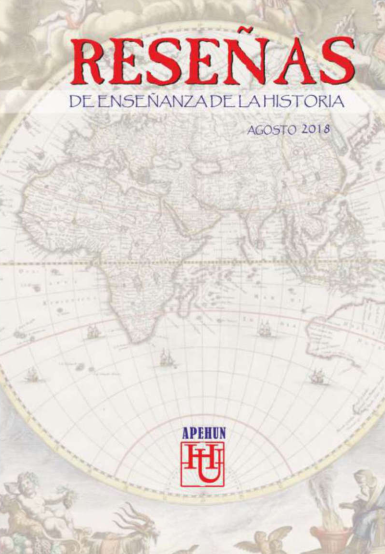Fuentes de información histórica en el desarrollo de la literacidad crítica de estudiantes de educación secundaria
Keywords:
sources of historical infomation, development of a critical attitude, critical Literacy, types of studentsAbstract
Thisresearch hadas main objective to know. how a group of Cbilean high school students. manage the sources of histo1ical information when they learn to read, analyze and interpret the sources. Also. to explore factors that could favor or hinder the development of a critica! attitude. from the students, towards the information coming from a variety of sources The information obtained through a questionnaire, classroom observation, group interviews with students, and interviews to the teachers, allowed us to elaborate 3 types of students. inrelation to Lheir level ofliteracy when they work with historical sources. It was concluded that using a variety of historical sources in different formats, using online sources in real time and comparing them, favors the development of students' critical literacy.
Downloads
References
Alderson, J. Ch. (2000). Assessing Reading. Cambridge United Kingdom: University Press.
Cassany, D. y Castellá J. M. (2010). Aproximación a la literacidad crítica.
En Revista Perspectiva, Florianópolis: Editora UFSC Gardner. H. ( 1999). La inteligencia reformulada. Las inteligencias múltiples en el siglo XXI. Barcelona: Editorial Paidós.
Hess, D. (2009). Controversy in the classroom: Th e democratic value of discussion. NewYork. Roulleclge. Lockwood,A.L.
Legardez, A. (2003): " L'enseignement des questions sociales et historiques, socialement vives". En Le cartable de Cfio, Nº 3, GDH , LEP, Lausanne: En: http://c liowe b. free. fti revues/cartabl edeclio/ca11abl ecli o. htm
Pages, J. (2009). El desarrollo del pensamiento histórico como requisito para la formación democrática de la ciudadanía. En Aguiar de Zapiola, L. funes, G. y Tejerina M. E. (coords). Reseñas de Enseñanza de la Historia.
Córdoba: Editorial Alejandria.
Santisteban, A. , González N. y Pages, J . (2010). Una investigación sobre la formación del pensamiento histórico. En Ávila, R.M.; Rivero. P. y Domínguez, P. L. (Coords.). Metodología de investigación en Didáctica de las Ciencias Sociales. Zaragoza: Editores Institución Fernando el Católico.
Santisteban, A. (2009). Como trabajar en clases la competencia social y ciudadana. Aula de innovación Educativa. Barcelona: Editorial Graó. UNESCO (2012). Alfabetización Mediática e informacional. París: Ediciones UNESCO.
Van Dijk, T. (2005). Las estructuras y funciones del discurso. México: Editorial Siglo XXI.
Wodak, R. y Meyer, M. (2003). Métodos de análisis crítico discurso. Barcelona: Editorial Gedisa. Web consultada: http:// www.curricu lumnaciona l.cl/inicio/
Downloads
Published
How to Cite
Issue
Section
License
Copyright (c) 2022 Reseñas de Enseñanza de la Historia

This work is licensed under a Creative Commons Attribution-NonCommercial-ShareAlike 4.0 International License.
Reseñas de Enseñanza de la Historia distribuye sus contenidos bajo la licencia https://creativecommons.org/licenses/by-nc-nd/4.0
Usted es libre de:
Compartir - copiar y redistribuir el material en cualquier medio o formato.
La licenciante no puede revocar estas libertades en tanto usted siga los términos de la licencia.










